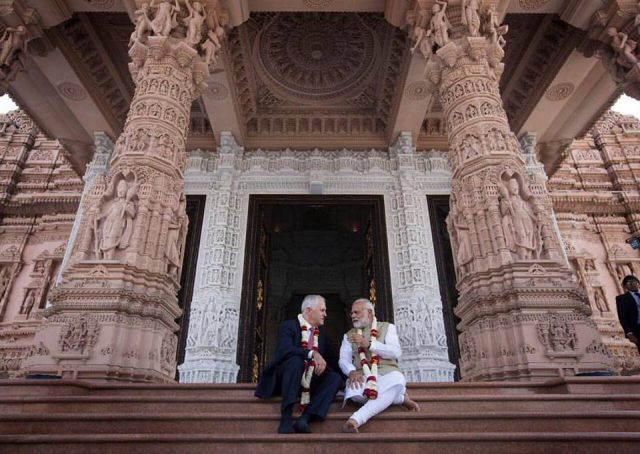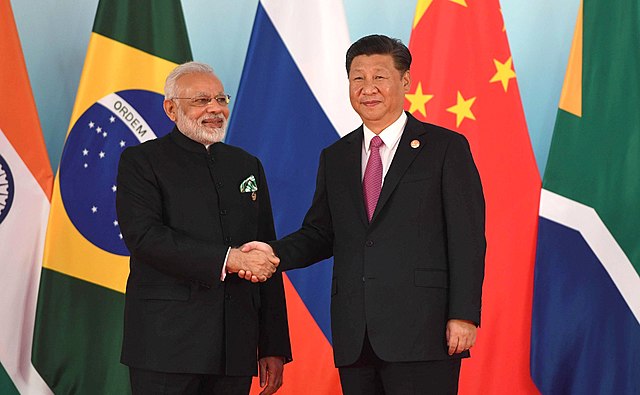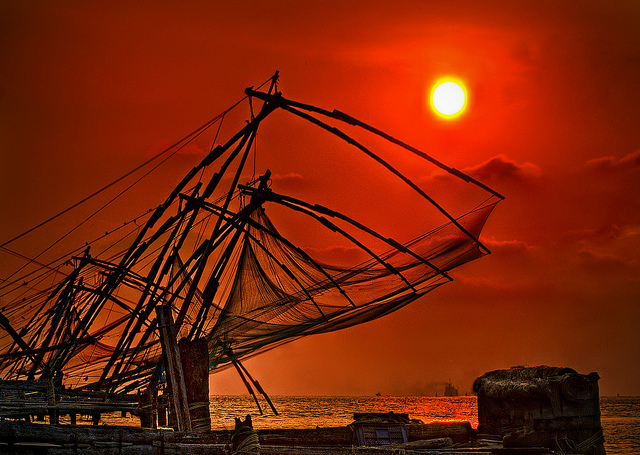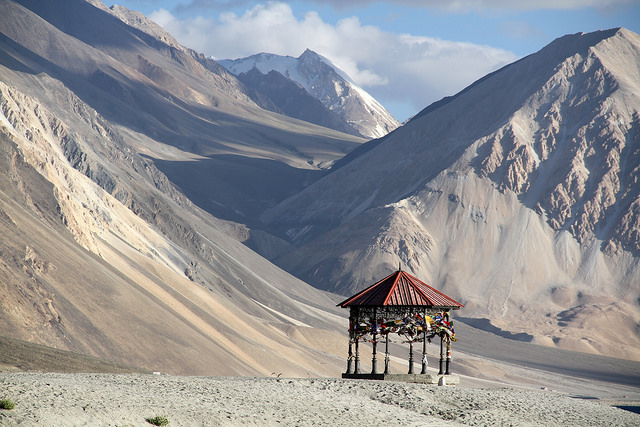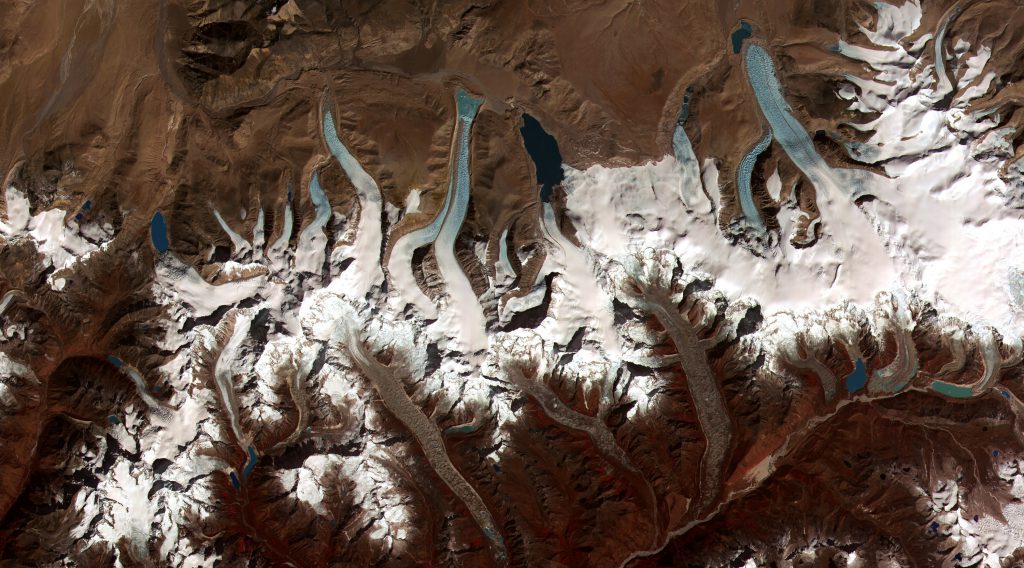Australia and the Quad
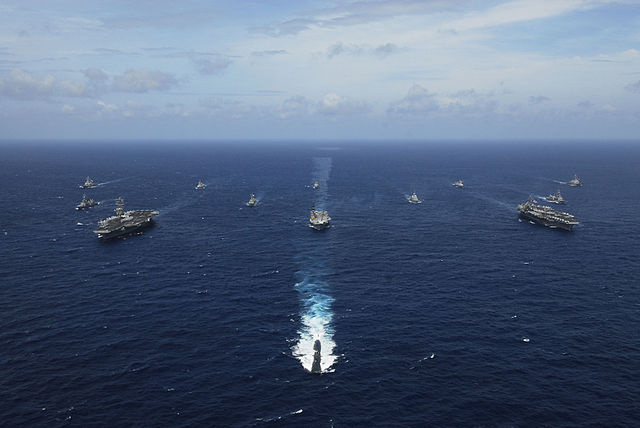
On 18 January, admirals from Australia, India, Japan and the US sat together on stage at the high-profile Raisina Dialogue in New Delhi. Their presence reflected the shared strategic assessment that China has become a disruptive force in the Indo-Pacific. Taking time out to deliver a lecture at India’s National Defence College, Australian Defence Industry Minister Christopher Pyne echoed remarks by Indian PM Narendra Modi to the Australian Parliament in 2014, affirming that India had shifted from the periphery to the centre of Canberra’s strategic frame.
Yet on 30 April, the Australian reported that Australia had failed in its push to secure an invitation to join Japan and the US in the annual Malabar exercises with the Indian Navy. The explanation provided was that New Delhi didn’t want to offend China ahead of the informal summit between Modi and Xi Jinping in Wuhan on 27–28 April. That’s misleading. India’s naval exercises with Japan and the US are a strategic challenge for China; Australia would add only modest capabilities.
There’s a threefold basis to India’s reluctance to invite Australia back into the Quad: the shadow of a previous abandonment of the Quad by Australia; an imbalance in the depth of bilateral relations with Australia compared with those with Japan and the US; and consideration of China’s sensitivity. The last is especially important because of perceptions about Australia’s seeming instinct for perpetual war and the Turnbull government’s turn to an anti-China posture over the past 18 months.
The origins of the Quad were entirely benign. In December 2004, in response to the massive earthquake and Indian Ocean tsunami, the four countries with the maritime capabilities, logistical resources, political will and decision-making capacity to act quickly and effectively came together in a core group to coordinate tsunami relief. The memory of that remarkable experience in multilateral cooperation on disaster relief and humanitarian assistance lingered and in time gave birth to the Quad.
The first informal quadrilateral summit was held on the margins of the ASEAN Regional Forum meeting in Manila in August 2007 between the PMs of Australia, India and Japan and Vice President Dick Cheney. The four joined Singapore the following month in a large naval exercise that drew Chinese diplomatic protests. In February 2008, PM Kevin Rudd pulled Australia out of the combined exercises.
However, years of subservience to Chinese sensitivities failed to soften Beijing’s growing assertiveness across the Indo-Pacific. India began aggressively pursuing diplomatic initiatives to the east, Washington announced an Asia pivot, and the Coalition government began to articulate public unease about aspects of Chinese behaviour in Australia’s primary strategic region.
The US national defence strategy alleges that China ‘is leveraging military modernization, influence operations, and predatory economics to coerce neighboring countries to reorder the Indo-Pacific region to their advantage’ in pursuit of ‘Indo-Pacific regional hegemony’. In response, says the national security strategy, the US will ‘increase quadrilateral cooperation with Japan, Australia, and India’. Australia’s 2017 foreign policy white paper similarly asserts: ‘The future balance of power in the Indo-Pacific will largely depend on the actions of the United States, China and major powers such as Japan and India.’
The Indo-Pacific frame integrates geography, the ‘free and open’ principle and democratic values into one strategic construct. The Indian Ocean covers a fifth of the world’s ocean area, with almost 50 countries around its littoral and immediate hinterland. With links to both the Atlantic and the Pacific oceans, it is of vital commercial, political and strategic importance to India.
India’s peninsular shoreline exposes it to seaborne threats from the east, west and south, while also giving it a major commercial and geostrategic location astride the sea lanes of communication between the Middle East and East Asia. Adding population, economic weight, military power and diplomatic clout gives India multiple roles in safeguarding sea lanes, countering piracy, containing Islamic militancy and mounting disaster relief operations.
The Australian continent is part of the geographical divide between the Indian and Pacific oceans. Australia is inextricably invested in the security of both regions. If the Indo-Pacific is accepted as the new organising principle of the foreign policies of Australia, India, Japan and the US, then the four coming together informally in the Quad is a logical outcome. Australia’s participation would have symbolic value in highlighting the entente cordiale between the long-established democracies but would add marginally to the cost in India’s relations with China.
India’s policy elite remains suspicious of Australia’s reliability. At a joint press conference in Canberra on 5 February 2008 with his Chinese counterpart Yang Jiechi, Foreign Minister Stephen Smith said: ‘One of the things which caused China concern last year was a meeting of that strategic dialogue [with Japan and the US] plus India, which China expressed some concern with’ and ‘Australia would not be proposing to have a dialogue of that nature’ again. On 10 February, Smith explained that the 2007 quadrilateral meeting had been a ‘one-off’. While the trilateral dialogue with Japan and the US would continue, the ‘four-way conversation’ would not.
The optics of the announcement in the presence of China’s foreign minister, and the substance of the unilateral cancellation of the Quad, still colour India’s assessment of Australia’s credentials. This also explains why India spurned an invitation to Australia in 2017. India was uncertain of ‘Australia’s “strategic clarity” vis-à-vis China, particularly as China has made significant inroads into Australia’. Yet India was happy to hold bilateral AUSINDEX naval exercises with Australia in 2015 and 2017. The two have also agreed to a 2+2 dialogue involving their defence and foreign secretaries.
Growing nervousness at China’s assertiveness and latent apprehensions about the limits of its regional ambitions are the prime motivations for the Quad’s revival. The complementary security interests are given ballast by shared political values and a rhetorical commitment—often breached in practice—to an open rules-based order.
For each of Australia, India and Japan, the relationship with the US is the single most important and that with China the second most critical—outweighing the importance of the other two partners. That means there will always be strong pressures to subordinate ties with the lesser two partners to China’s sensitivities. As a military grouping with a China containment agenda, the Quad would polarise the region further and bend it in the direction of a tense, zero-sum competition.
Rather than a military alliance aiming for strategic deterrence, therefore, the overarching goal should be diplomatic dissuasion, underpinned by extensive working-level engagement in foreign and security policy and military-to-military interactions.


